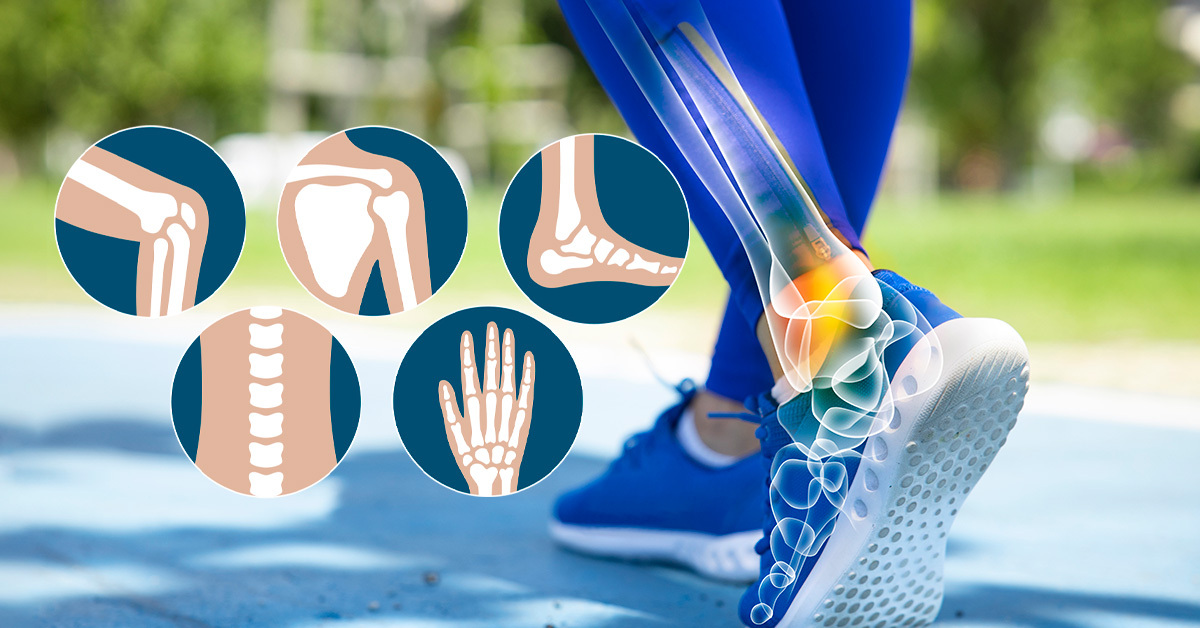Be in the know about bone and joint health

And let us not grow weary of doing good, for in due season we will reap, if we do not give up. – Galatians 6:9
“OUCH! I hit my funny bone!”
If you’ve ever experienced this, you know there is nothing funny about it. But did you also know it is not a bone? It’s your ulnar nerve, running inside your elbow.
When you think of bones and joints, what comes to mind?
• Drink your milk!
• Get your calcium?
• Maybe you think of the same interesting sounds that I do: “Snap, crackle and pop!”
Musculoskeletal conditions
Just like other parts of our intricately created bodies, our bones and joints can wear out, get injured or have challenges with proper development.
Musculoskeletal (MSK) conditions include back pain, arthritis, traumatic injuries, osteoporosis, spinal deformity and childhood conditions. They can lead to significant disability plus diminished productivity and quality of life. Treatment and lost wage
costs associated with MSK diseases in the U.S are significant – BILLIONS of dollars annually! Unfortunately, research funding is currently less than 2 percent of the National Institutes of Health annual budget and continues to decline each year
despite these associated high costs.
- More than half of the American population over the age of 18 (54%) are affected by musculoskeletal (bone and joint) conditions, according to The Burden of Musculoskeletal Conditions in the United States.
- One in three (33%) people over the age of 18 required medical care for a MSK condition in each of the years 2009 to 2011 – a 19% increase over the last decade.
- Bone and joint conditions are the most common cause of severe, long-term pain and physical disability worldwide – affecting millions of people.
- The global prevalence of MSK conditions is predicted to increase greatly due to increasing life expectancy and changes in risk factors unless new treatments and preventive measures are found.
Ever thought about why we have bones?
Bones provide our bodies shape and support, protection for some organs, a storage site for minerals, and provides marrow for the development and storage of blood cells.
What do joints do then?
Joints are where two or more bones meet to facilitate movement. They also provide stability to areas of the body like our head and pelvis, as well as flexibility to other areas.
As you can see, our bones and joints are kind of a big deal. Here’s a few more bone and joint fun facts to ponder:
- You were born with 300 bones, but as you age, they fuse together leaving you with 206 bones.
- With the 54 bones you have in your hand, fingers and wrist, you are flexible enough to write, play an instrument and browse your smartphone.
- Every seven years, you develop a new skeleton because the collagen in bones constantly replenishes itself.
- When you hear that "creaking" sound in your bones as you flex your foot or other joint in your body, blame the arthritis that develops as your bone cartilage thins.
How do we care for our bones and joints?
Harvard suggests five ways to boost bone strength early:
- Eat a healthy, balanced diet rich in calcium, vitamin D, magnesium and phosphorous.
- MOVE using regular weight-bearing exercise, such as walking, dancing and step aerobics, that can protect your bones. Be sure to include strength training in your exercise routine.
- MAINTAIN a healthy weight.
- DON’T smoke and limit alcohol intake.
- KNOW your risk factors. Some conditions and medications can increase the risk of developing osteoporosis. Talk with your provider to develop a prevention plan.
‘Bone and Joint Action Week’
Now is the time to raise awareness … and the reason for “Bone and Joint Action Week” – a collaborative effort of the U.S. Bone and Joint Initiative and the Global Alliance for Musculoskeletal Health – held annually Oct.
12-20. Each day has a theme designed to raise awareness worldwide about prevention, disease management and treatment.
There are five special days during this week:
- Oct.12: World Arthritis Day
- Oct. 16: World Spine Day
- Oct 17: World Trauma Day
- Oct 19: World Pediatric Bone and Joint (PB&J) Day
- Oct 20: World Osteoporosis Day
The National Institute of Arthritis and Musculoskeletal and Skin Diseases is a great resource for more information on these conditions as well as ways to support bone and joint health.
Sources: